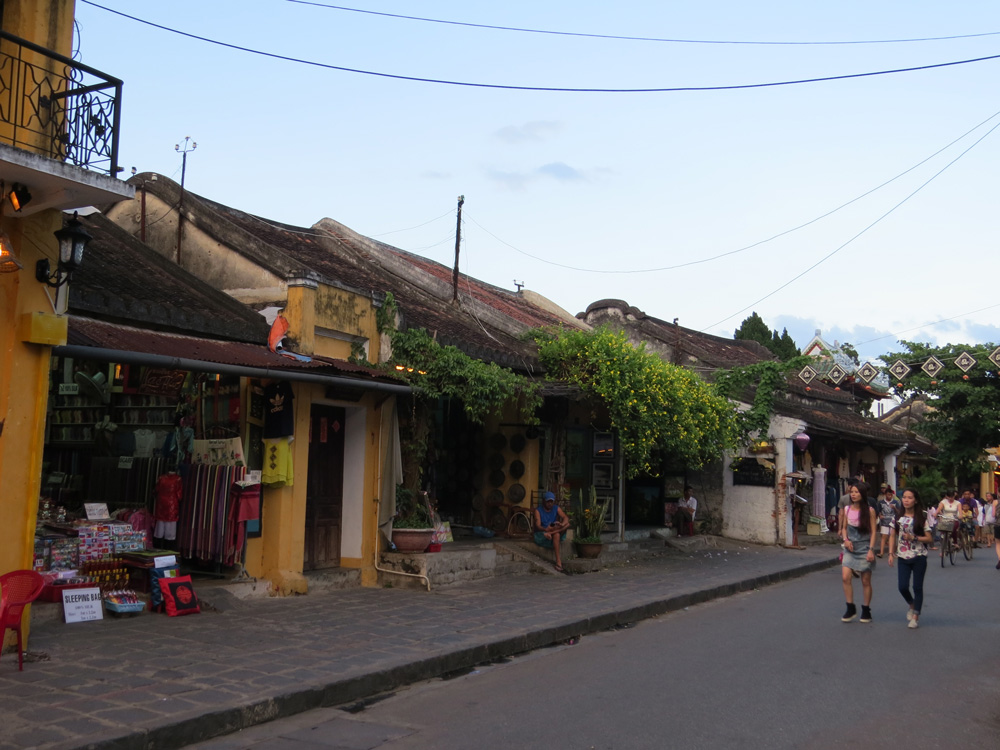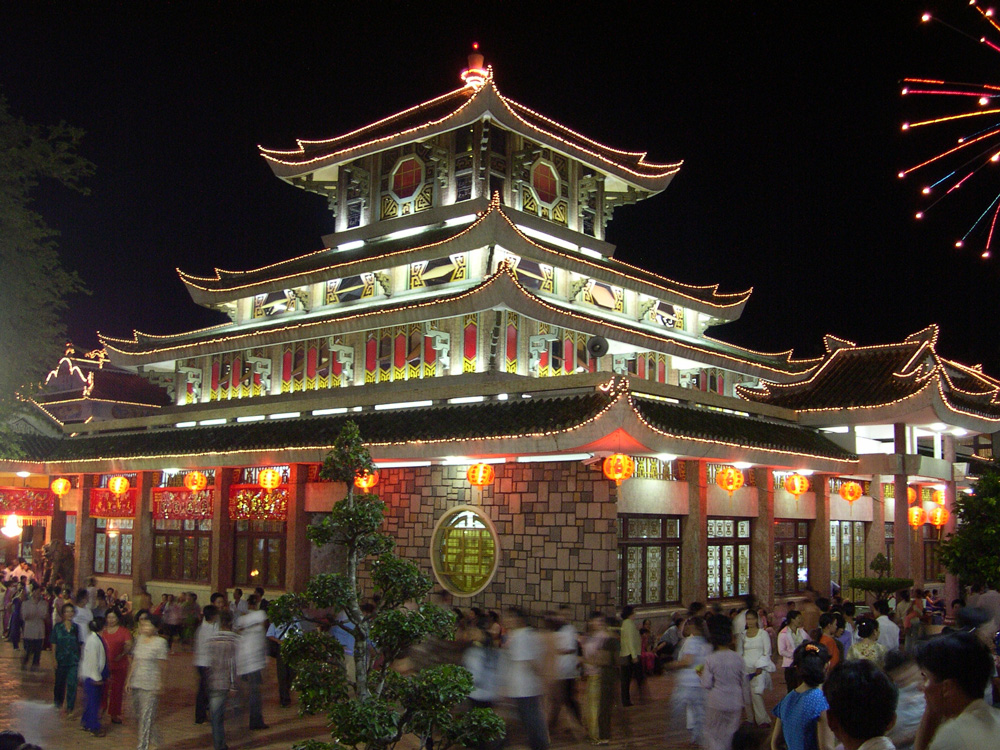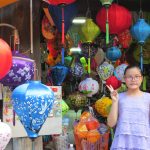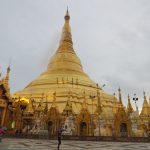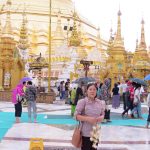Son Tra Peninsula, a fantastic attraction in Danang for those who like sea, wild life and adventure.

After a night touring Da Nang by motorbike under sparkling lights by Han River and chatting with two my old friends in street stalls while enjoying popular local food such as banh trang thi heo (rice paper rolled with pork), bún chả cá (chopped fish noodle) and cha bo (steamed chopped beef), I got up early the next morning and took an energetic walk to see the dawn on one of the most beautiful beaches on the planet. It’s worth travelling thousands of kilometres just to enjoy this moment, refreshing the spirit under an enormous sky and next to the sea with its fresh air, clear water and cool breeze.
When I first came to Da Nang many years ago I visited the city’s most popular attractions such as Non Nuoc Mable Mountain, Cham Museum and Nam O Beach. This time, I wondered what was new to discover in Da Nang. Having asked a staff member at my resort she recommended that I should visit Son Tra Peninsula, a relatively new and exciting attraction in the city for those who like adventure.
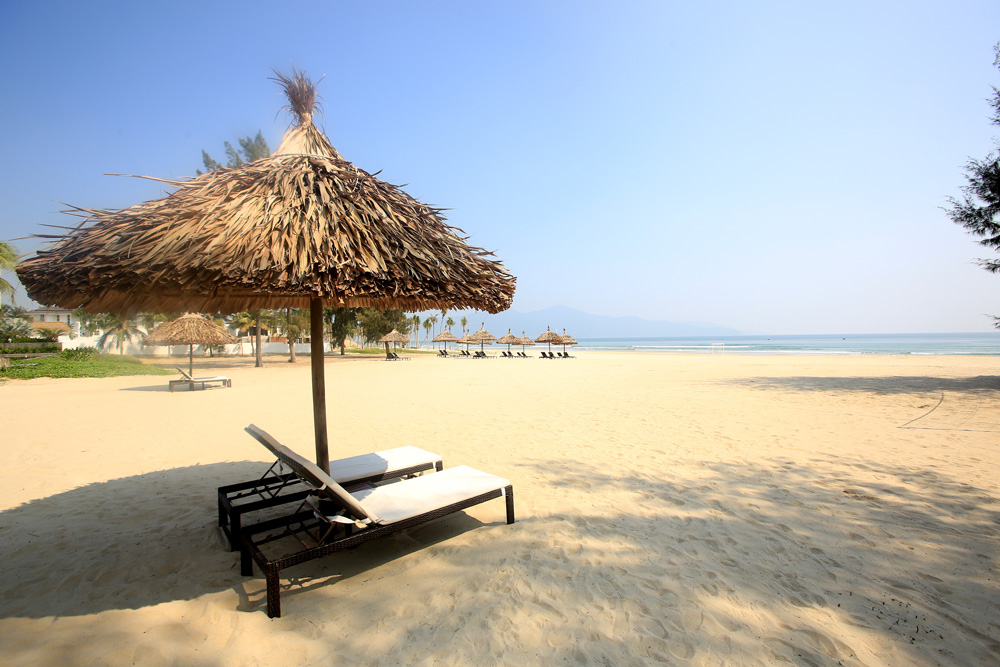
I rented a xe om (motorbike) driver who was a local middle-aged man, who volunteered to be my guide. The new road to Son Tra Peninsula ran along nice beaches with new resorts and parks springing up and the remains of the old fishing village featuring many small boats on the seashore. On the other side, a series of new houses and buildings rose up as a totally new face of this active city.
For a distance I saw Son Tra Peninsula as a mountain jutting out into the sea with a huge white Buddhist statue standing at the halfway up the mountain. I stopped to take some photos at the quiet fishing village, where I saw fishermen catching small fish from their nets. I suddenly thought that with the rapid development of this place, I don’t know whether I would be able to see this again when next I return. A friend of mine works in a travel agent and who has his own slogan that “Come to Vietnam before it’s too late” – as he says that Vietnam is developing so quickly, today’s values of traditional culture and the beauty of life could be gone by tomorrow.
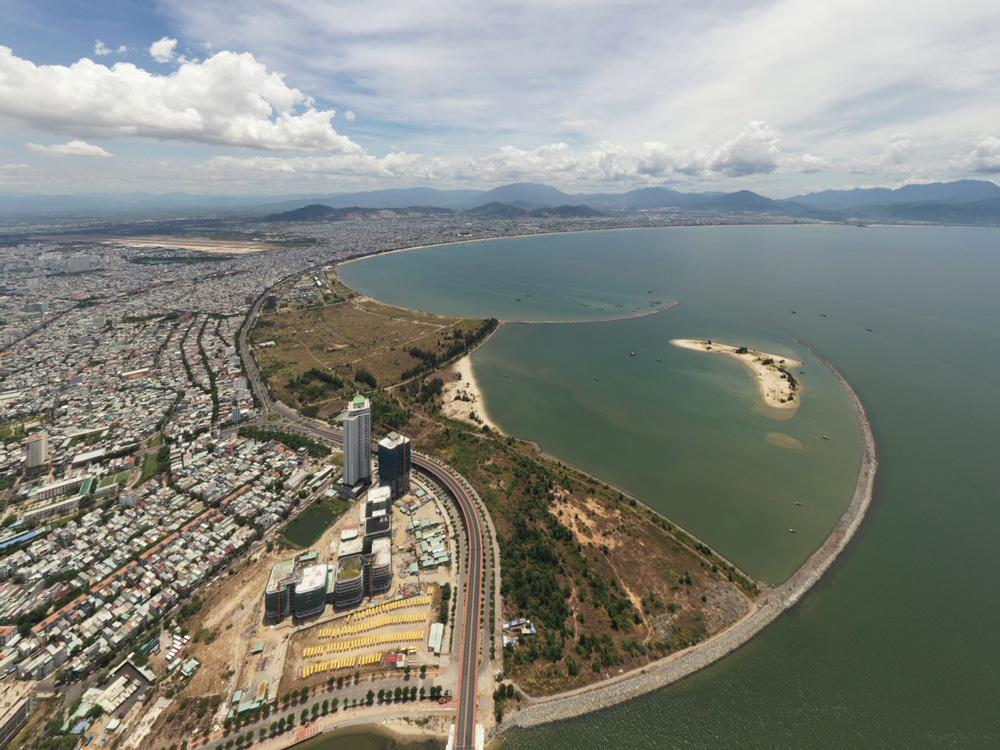
Our motorbike reached to the foot of Son Tra and the driver reminded me to sit firmly before we slowly climbed up the mountain. The winding road followed the mountain slope with its green carpet of forest on one side and vast ocean on the other side. Son Tra Peninsula is nearly 700 metres above sea level and is considered as Da Nang’s green lung. It was previously a strictly controlled military zone but has now become a popular destination for adventure tours discovering wild beaches around the peninsula that are ideal for swimming and diving, springs and waterfalls hidden in the forest and a preserved wild nature park featuring hundreds of precious flora and fauna, their names noted in Red Book including vooc cha va, a monkey with long tail and chickens with red faces.
My first stop was Linh Ung Pagoda, built in 2004 which has become a place of pilgrimage for most of Vietnamese tourists. The pagoda is famous for Vietnam’s biggest Buddhist statue, with the height of 67 metres. I had to walk up hundreds of stone stairs to visit pagoda courtyard, where18 status of Arhat and sophisticated carved wooden boards telling the history of Buddha in the sanctum. Standing the pagoda’s yard I could see the panorama view of romantic Danang city by the sea and Ba Na Mountain and Hai Van Pass.
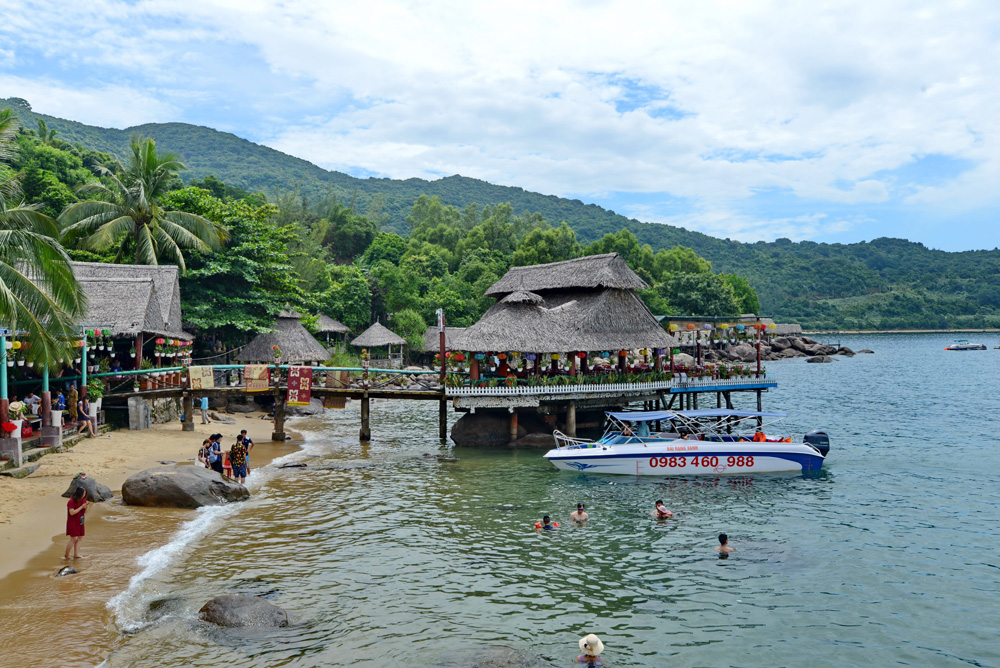
We continued the journey to reach the top of mountain where my driver told that there was an ancient Banian tree aged over 1000 years, according to the local people. While I really didn’t believe it, I was still curious to see the tree. Our old motorbike plodded up the high slope with the cliff on one side and abyss on the other. Sometimes I felt quite fearful when my driver tried to speed up in the middle of the mountain slope, especially as his old motorbike seemed reluctant to ablige.
Many resorts were being built in valleys by the sea along the road. We stopped at a beautiful and dangerous curve where a safety barrier with a long line of funny stone monkeys sat thoughtfully and looking at the mountain. From this height, the sea looked a serene lake stretching to the horizon. The driver pointed out Cu Lao Cham, off the coast of Hoi An Town to the east and Non Nuoc Mable Mountain to the south.
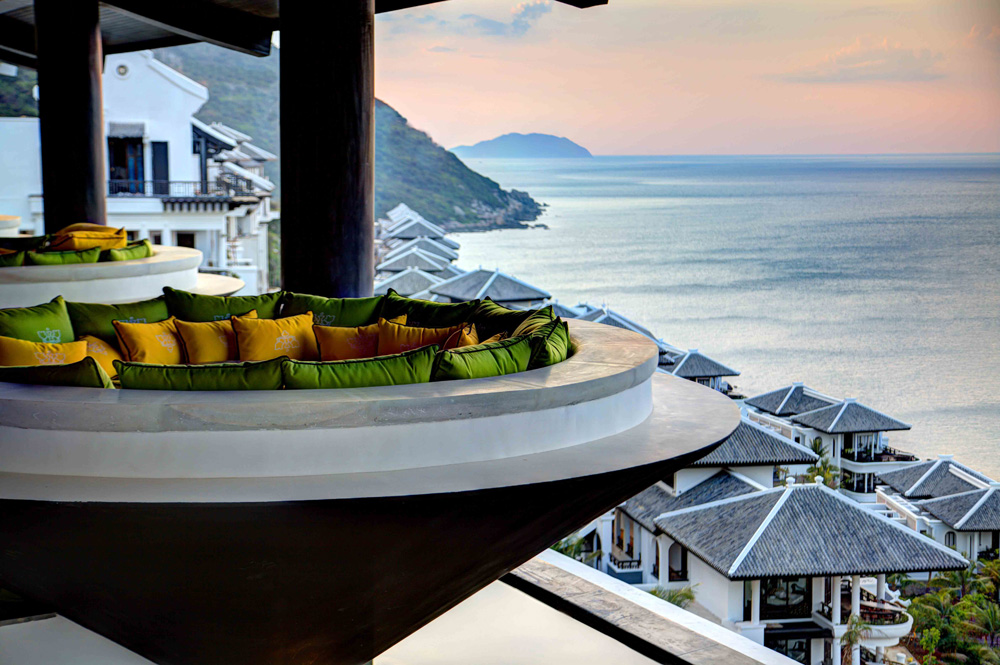
The road to the ancient banyan tree was so deserted and it seemed that there were not many people visiting it yet. The nature was fresh with very green colours stretching as far as the eyes could see. I was interesting to see climbing plants with colourful flowers covering most of the road and hear a concert of hidden birds singing here and there.
Finally, I reach the ancient banyan tree on the mountainside. It is huge; the likes of which I have never seen before. There were more than a dozen roots leading to big trees around its main trunk that looked about as large as the arms of three people.
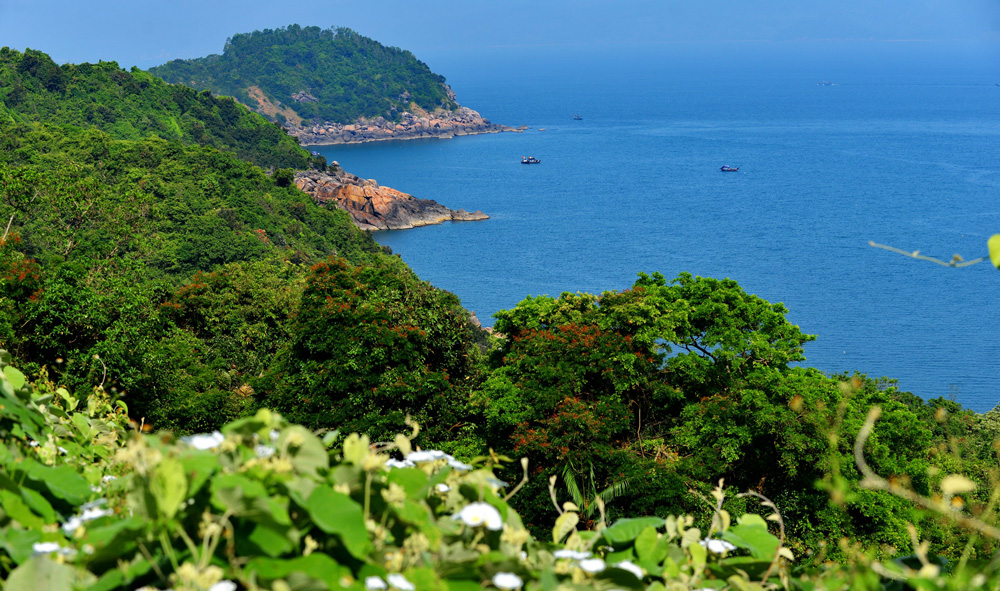
One more attraction that most of tourists that should not miss when visiting Son Tra is the Fairy Chessboard, located on the top of a small mountain called Ban Co, where it is said that once upon a time fairies visited and sat down to play chess together when they travelled to the human world. Nowadays, a statue of a fairy has been placed by a carved stone chessboard, so that anybody can also play chess with the fairies up among this windy yet wondrous space of sky and sea.
Text: Thanh Vân
Photo source: Minh Hải & collected



